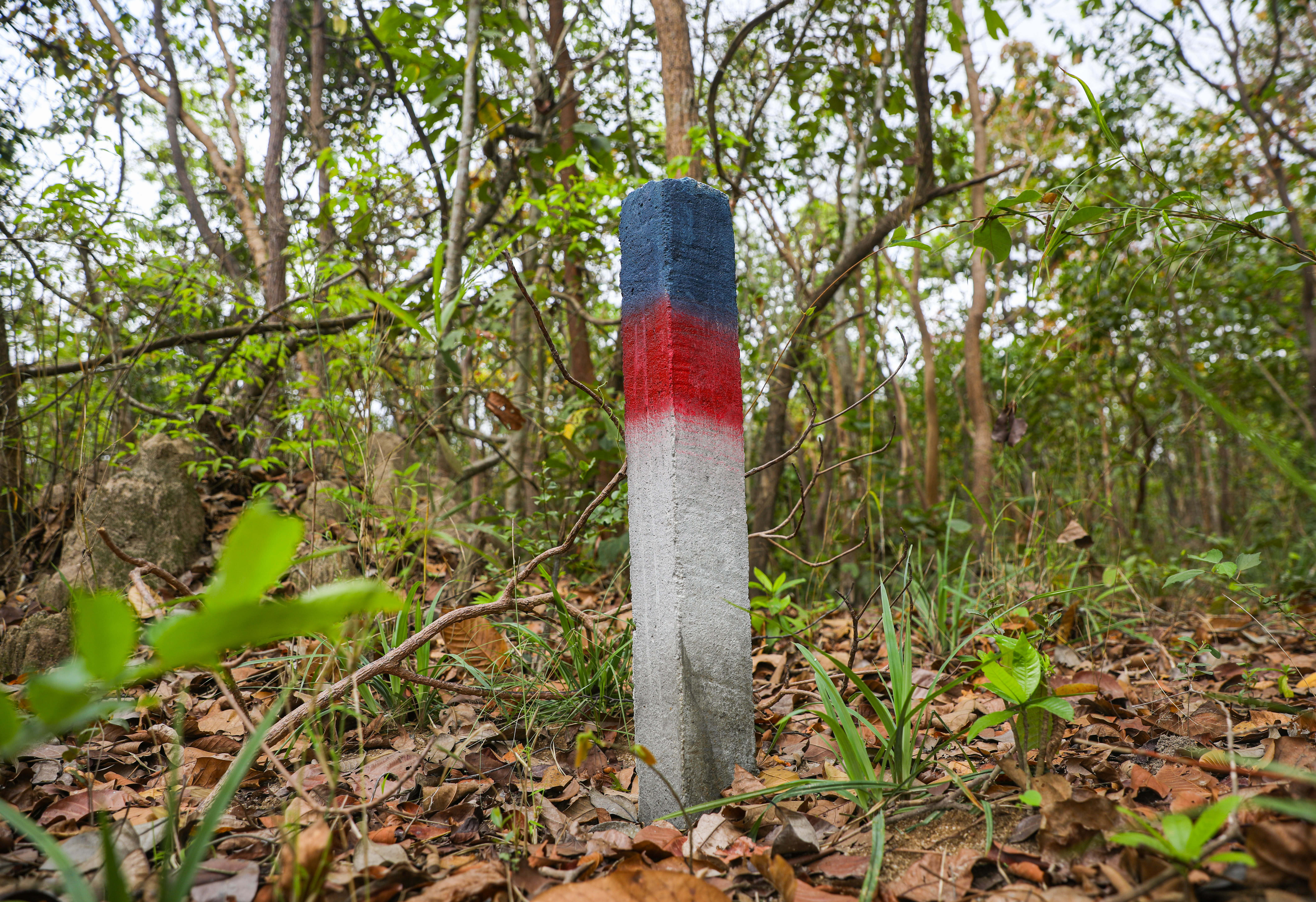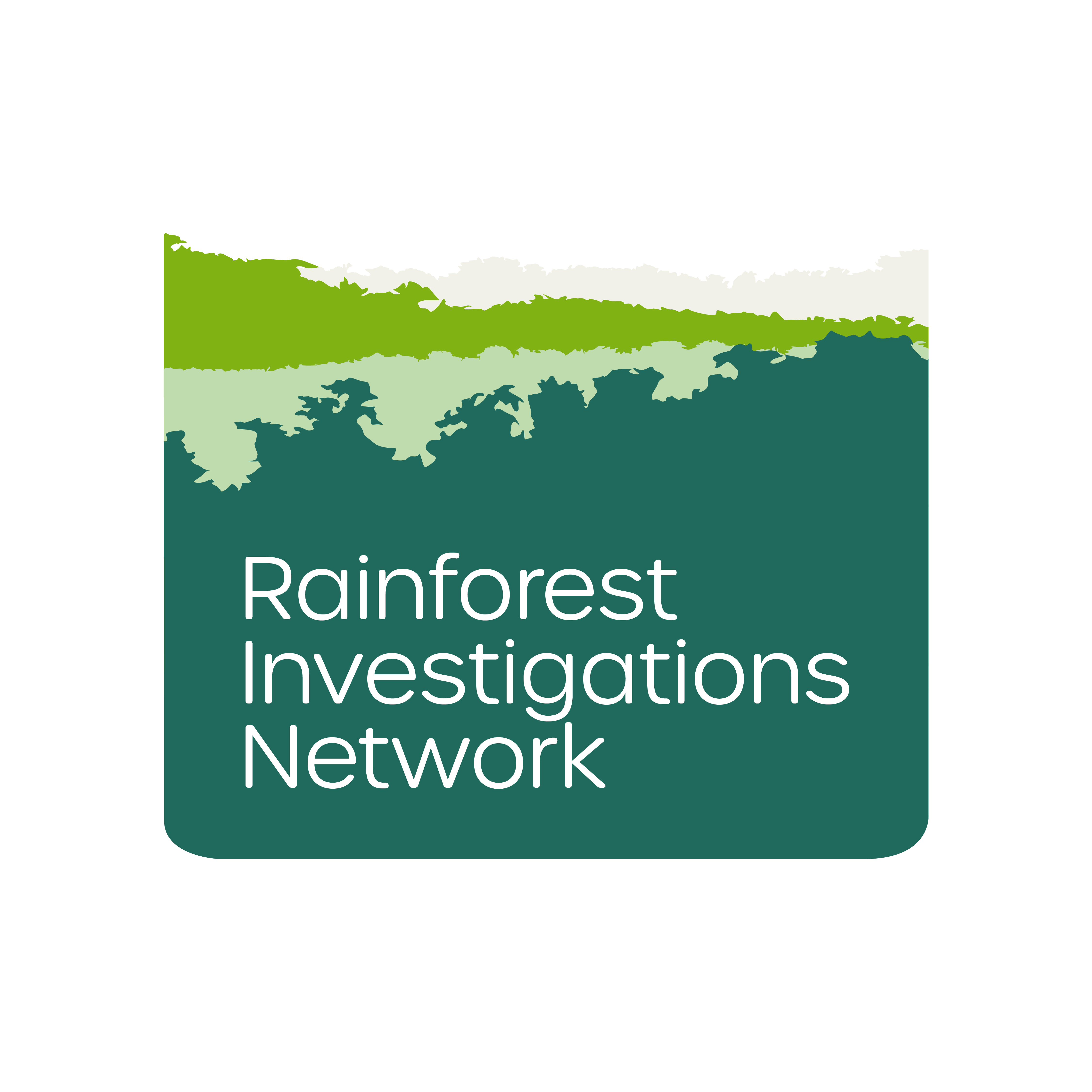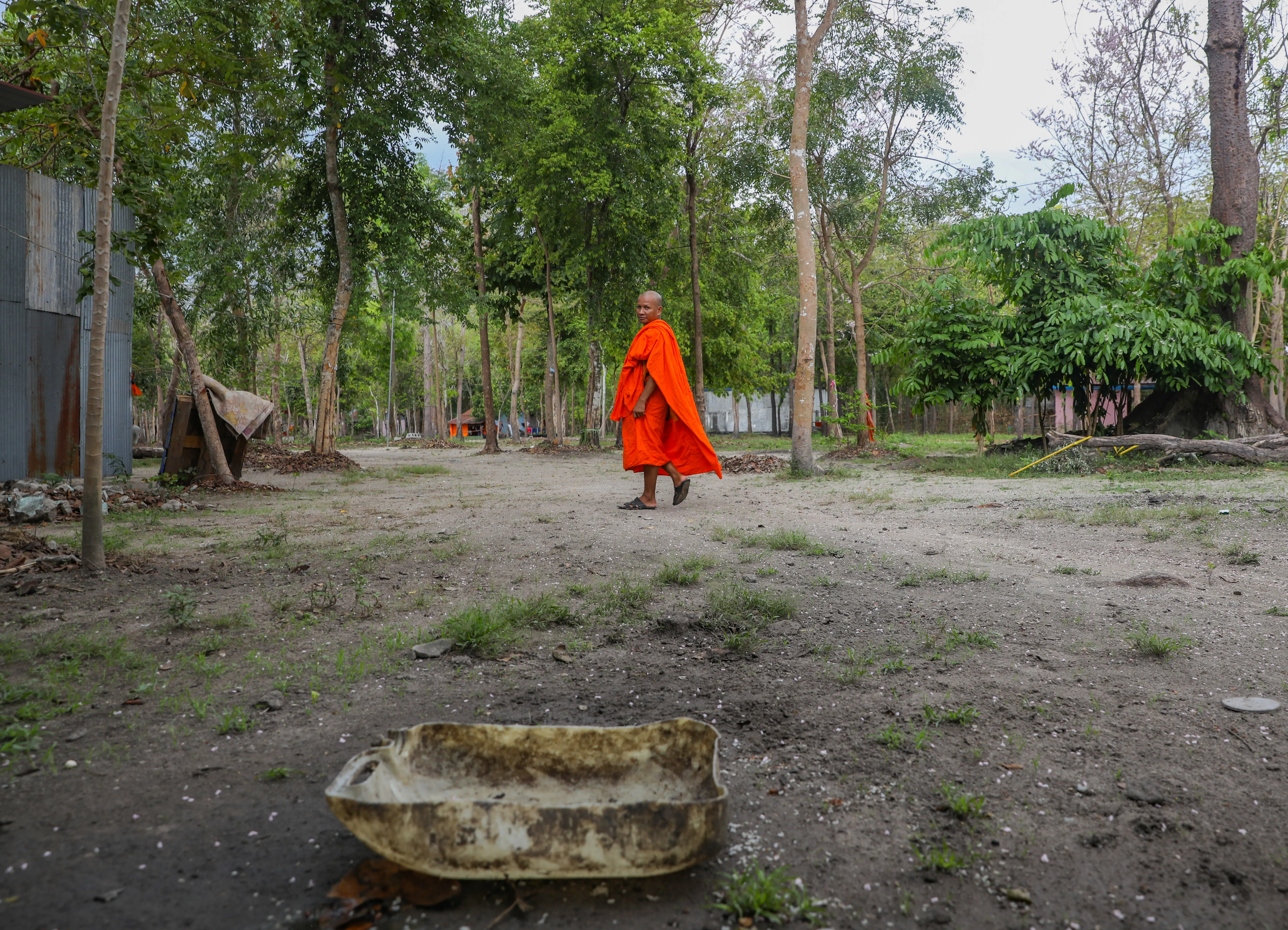
A Khmer-language version of this story is available at Southeast Asia Globe.
A two-lane dirt road truncates the northeastern tree line of Phnom Tamao Forest, marking the start of a housing complex on private land bordering the protected area.
Dozens of boundary markers cemented underneath the tree canopies of the forest indicate the plans for land exchange deals that would clear the way for development within the protected area itself.
Phnom Tamao, originally believed to be protected, is now threatened by shadowy construction plans, according to conservationists who worry for the future of a rescue centre and endangered wildlife in the sanctuary forest. Additionally, the privatisation of a protected area so close to Phnom Penh could indicate increased danger for Cambodia’s protected forests beyond the watch of environmental groups.

As a nonprofit journalism organization, we depend on your support to fund more than 170 reporting projects every year on critical global and local issues. Donate any amount today to become a Pulitzer Center Champion and receive exclusive benefits!
In the short term, development could sever wildlife habitat and turn the protected area into fertile poaching ground. In the long term, these plans could be the spearpoint eventually separating Phnom Tamao Zoological Park and Wildlife Rescue Centre from the forest, and potentially its donors.
Closed-door meetings, surprise contracts and 16 unavailable government employees on the local, provincial and national levels shroud the names of the developers and their intentions mostly in bureaucratic darkness, leading to environmental watchdogs requesting an anti-corruption investigation.
Despite the front of silence, a melting pot of Facebook posts, leaked documents, sales representatives and billboard advertisements produce a murky mesh of developers and tycoonswith their eyes on Phnom Tamao Forest.
Available documents indicate development plans for nearly half of the forest’s 25 square kilometres (9.6 square miles). Almost 12 square kilometres (4.6 square miles) have been promised to unidentified parties in exchange for faraway land and an array of benefits including trucks, motorcycles and a 30-room “leisure building.”
“I don’t think development necessarily means destruction of nature and natural resources,” said Nick Marx, director of wildlife rescue and care for Wildlife Alliance, an organisation running the wildlife centre with the Cambodian government. “We still don’t know officially what is going to happen to the Phnom Tamao Forest but we’re hoping for divine intervention.”
Phnom Tamao development
Satellite imagery shows Phnom Tamao Forest as a “green gem” and an “island of nature” surrounded by urbanisation and agriculture, according to Suwanna Gauntlett, founder and CEO of Wildlife Alliance, who said “it is our ethical obligation to conserve whatever vegetation we can.”
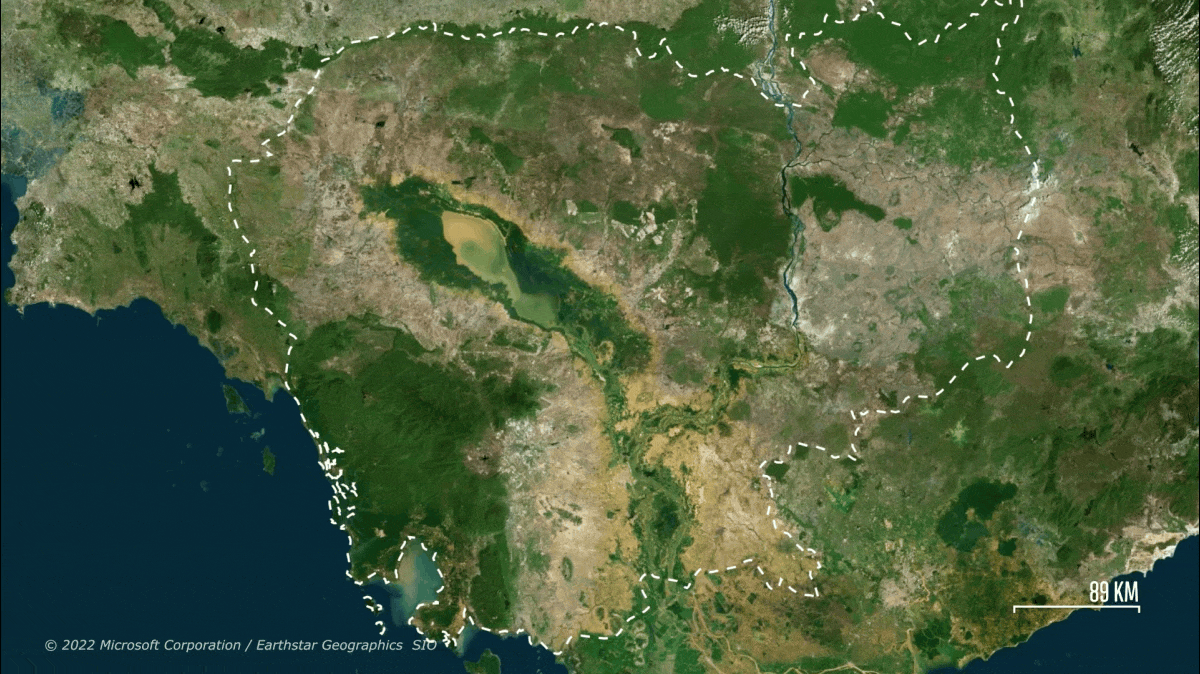
The rescue centre is within the forest being considered for development. Established in 1995, the centre is co-run by Cambodia’s Forestry Administration and Wildlife Alliance. Other conservation groups, such as Free the Bears and Fauna & Flora International, run endangered species programmes within the centre, which is home to more than 1,000 animals and is considered the Kingdom’s largest zoo.
These organisations received a letter in March from the Office of the Council of Ministers, an executive body directly under Prime Minister Hun Sen, stating the government had agreed in principle to an ownership transfer of two pieces of Phnom Tamao land “prior to development.”
The letter did not explain who would take ownership of the land from the Ministry of Agriculture, Forestry and Fisheries, nor the kind of development planned.
“This is the only green area that exists in these provinces. It would be shocking to take it out,” said Gauntlett, who claimed to have received no prior warning before the letter. “If the centre and its forests were to be damaged, we would be, especially our donors would be, shocked.”
The largest land exchange would be for 5 square kilometres (1.9 square miles). While the letter did not share the exact location within Phnom Tamao, other documentation and boundary markers indicate it will be located close to the rescue centre.
Clearing and bulldozing the forest for construction would fragment wildlife habitat and crush the zoo’s visitation. With no clear idea of the full plan, Gauntlett said she believes “eventually the centre will be displaced.”
The Phnom Tamao land in the southern province of Takeo is being exchanged for property in the faraway provinces of Siem Reap in the northwest and Mondulkiri in the east, the letter states. While the document leaves out future owners and plans, it lists the details of the deal’s add-ons. Besides swapping land elsewhere, the Takeo land recipient would also throw in construction of a 30-room leisure building, a new SUV, 20 motorcycles and nine Ford trucks, specifically Raptors and Rangers.
The proposal also offers 9.8 hectares (24 acres) for “the construction of permanent houses for 85 officers, staff and workers” at the rescue centre.
The recipients to be in charge of these exchange items are Omaliss Keo, director of the Forestry Administration, and Nhek Ratanapich, director of the Phnom Tamao Zoological Park and Wildlife Rescue Centre. Neither could be reached for comment from March to May.
The same letter announced the ownership of a neighbouring 3 square kilometres (1.15 square miles) of land in the Phnom Tamao Cattle Breeding Station, currently used by Kirisu Dairy Farm, would be transferred to an unknown entity.
“It is a government-run centre, a government-owned forest. We would not be the decision makers,” Gauntlett said. “This is an island of nature in the middle of urbanisation and it must be kept at all cost […]. Is there never an end of development? We need to balance development and conservation.”
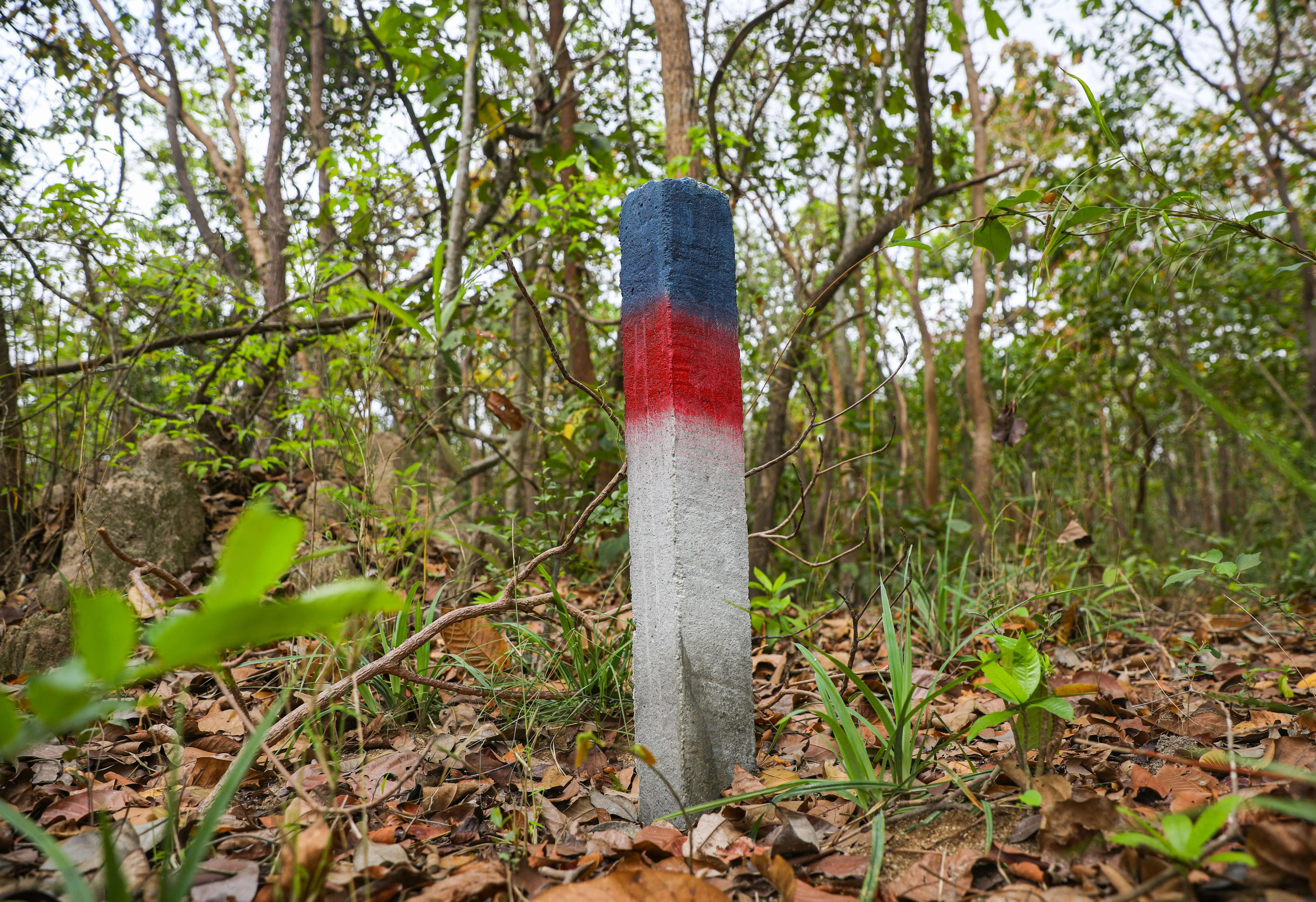
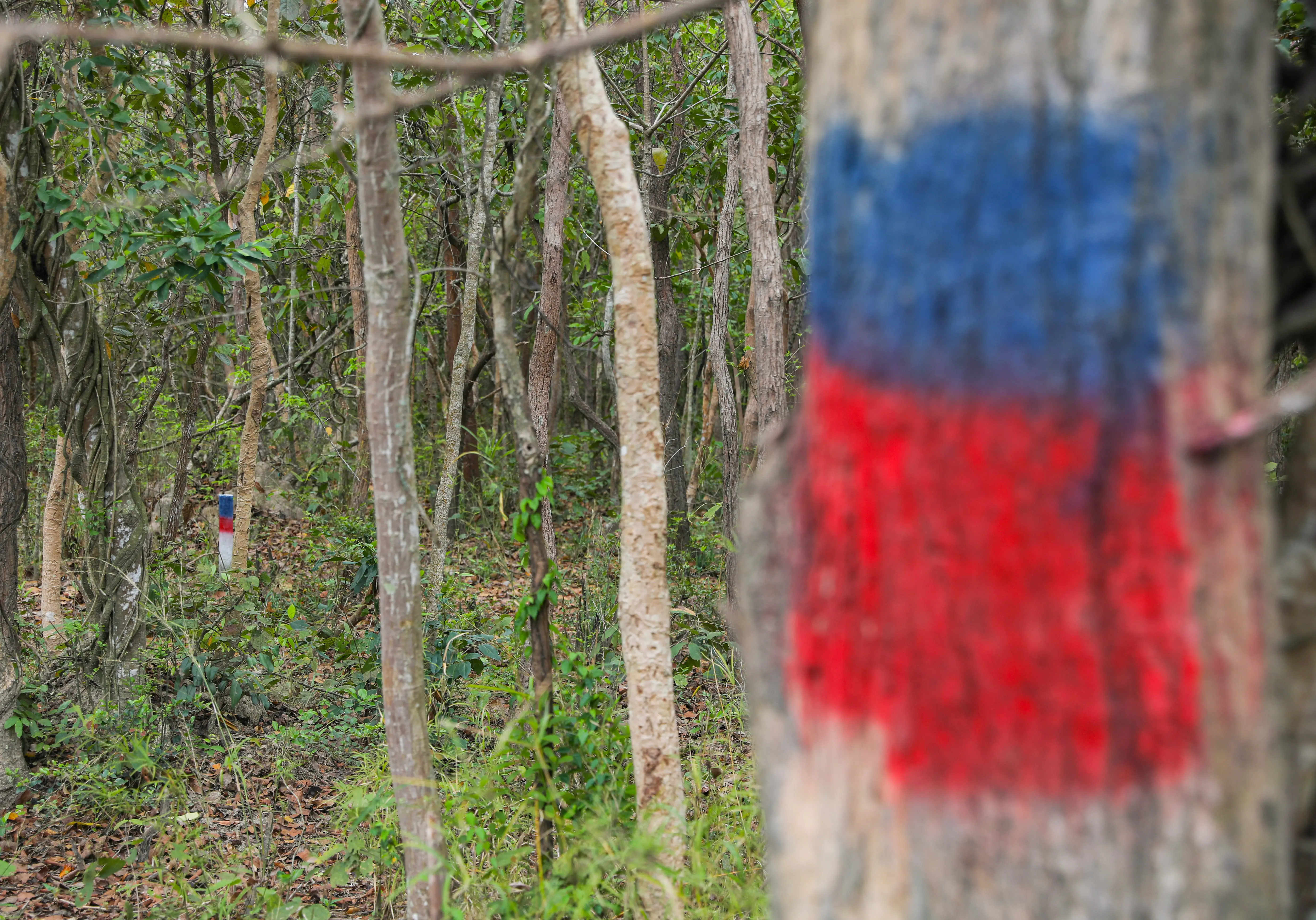
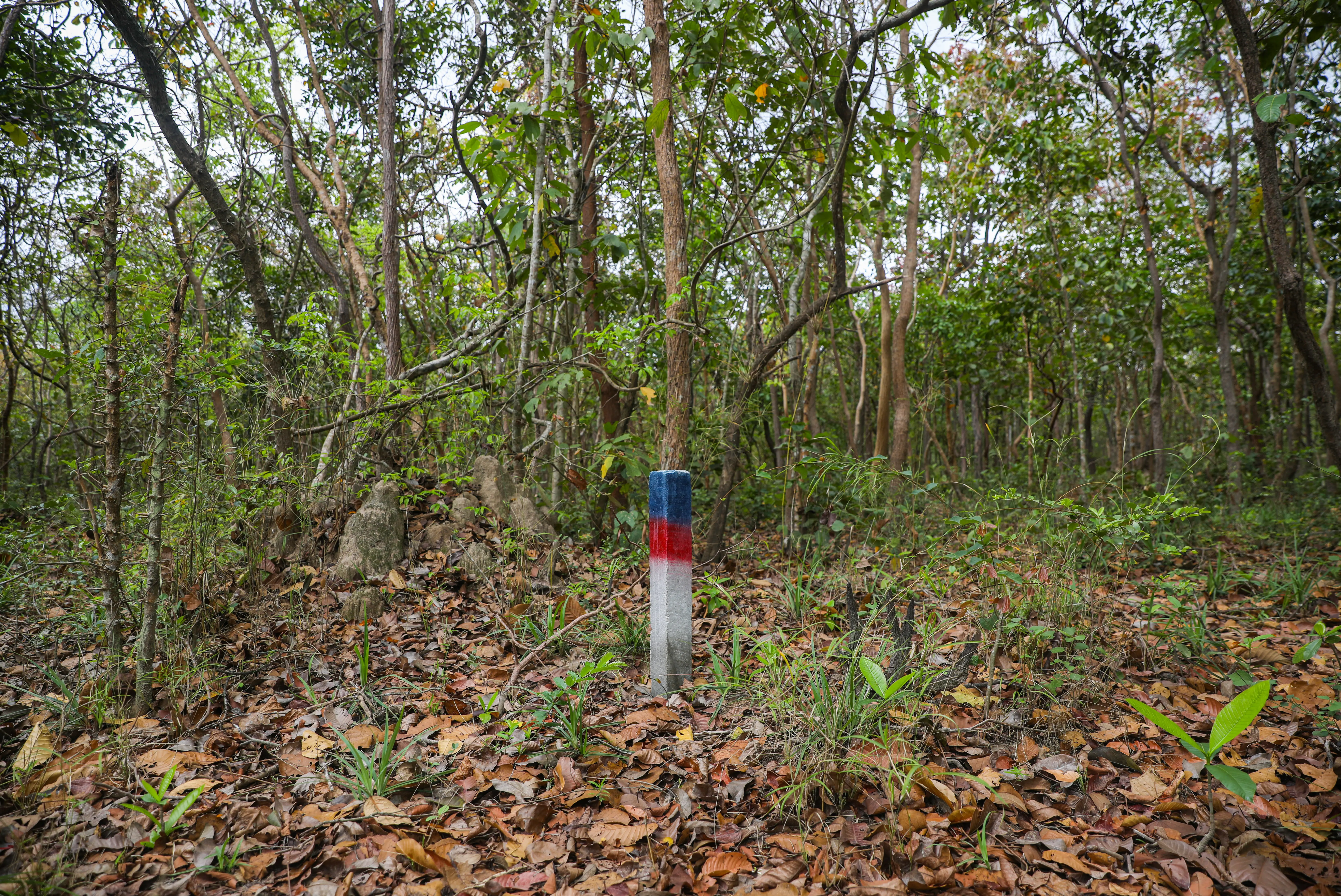
As a whole, Marx of Wildlife Alliance is hesitant about any development within the forest. While he conceded occasional development may be necessary, he noted “development does not necessarily have to entail the destruction of nature and natural resources.”
Marx hopes any development is for “the creation of an eco-friendly resort with a lodge,” which would allow greater access to wildlife-watching opportunities and boost the zoo’s visitation.
“This would be a credit to the government and Wildlife Alliance would support the project,” Marx said. “If the current concept is to destroy the forest and its wildlife to build more high-rise condos, we would be against it.”
No government official has publicly stated or confirmed rumours regarding the development plans, but available evidence does not point to an eco-lodge.
Documents shared at a stakeholder meeting in May and acquired by Southeast Asia Globe from a participant indicate the 5 square kilometres under consideration for exchange was recategorised from state land to real estate. The documents did not name any company or developer.
The same set of documents, however, indicated development company TP Moral Group requested two other land plots within the forest, totaling around 6.8 square kilometres (2.6 square miles).
Among the documents was an attendance log listing 15 government officials from four ministries: Culture and Fine Arts; Cults and Religion; Agriculture, Forestry and Fisheries; and Land Management and Urban Planning and Construction. Of those officials, 12 were unavailable for comment.
Pi Sea of the Takeo Provincial Department of Agriculture, Forestry and Fisheries, Chan Sopha with the Takeo Provincial Department of Land Management, Urban Planning and Construction and Srey Sambo, the local commune chief, provided the same statement: “I don’t know anything.”
While little light has been shed on development plans within the forest, construction has started on the northeastern border of Phnom Tamao.
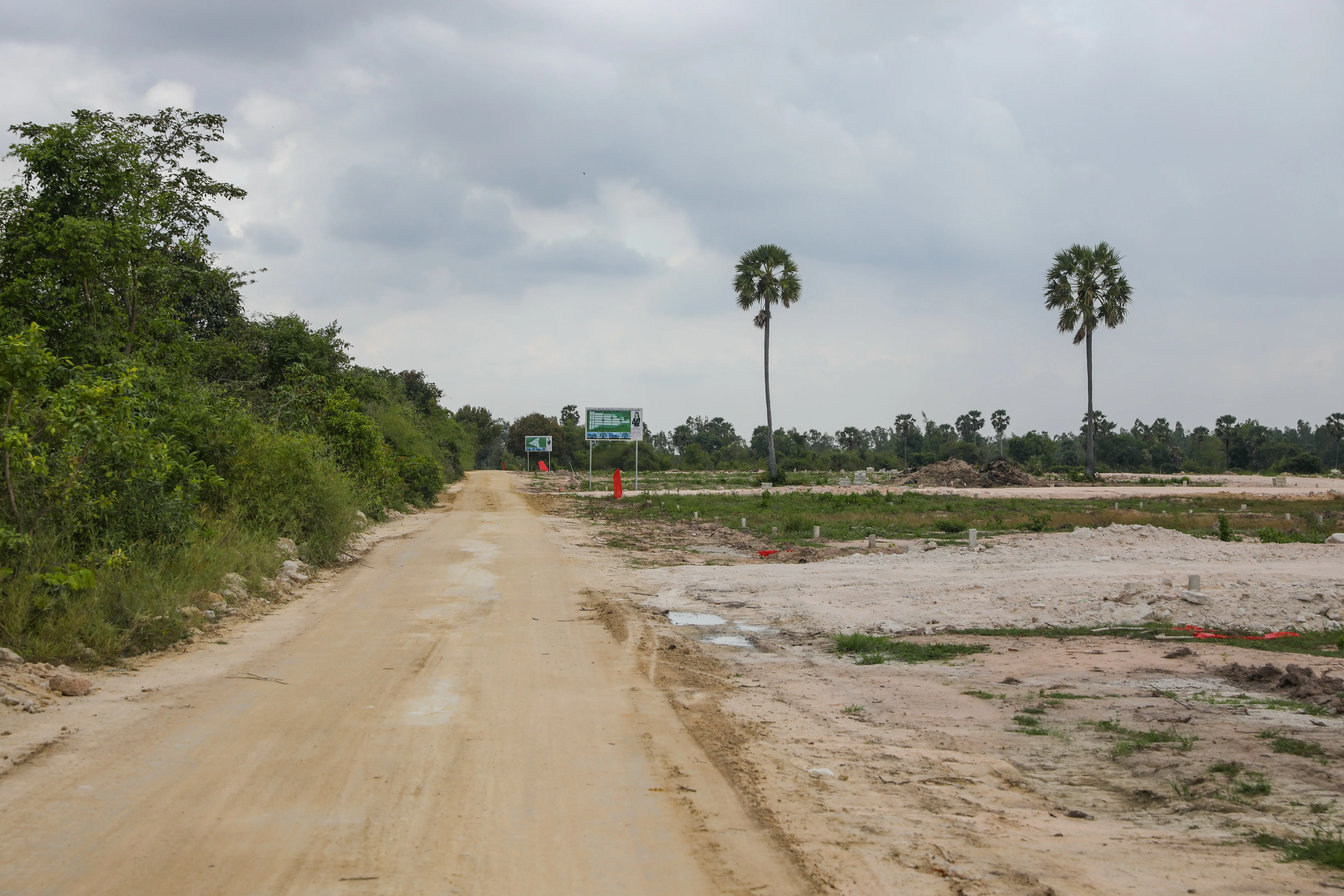
Sales billboards have been erected on the still-growing construction site on roughly 30 hectares (74 acres) of private land bordering Phnom Tamao Forest. Though there is no clear connection between the development and plans within the forest, Marx said multiple “eco-unfriendly” projects will further condemn the forest and its wildlife.
In a similar fashion to the letter from the Office of the Council of Ministers, the sales billboards and booklets don’t include any information on the developer. The booklet shows a price of $119 per square metre for the border development.
The billboards list five sales representatives, including three who corroborated that Bati Tourism & Development was in charge of the site. The project was expanded from 24 to 60 hectares (59 to 148 acres), but fewer than 300 of the 1,000 lots had been sold, the sales representatives said.
While Bati Tourism & Development and TP Moral Group are the two companies with clear claims to lands around and within Phnom Tamao Forest, a government Facebook post in March suggested there was another.
The Department of Agriculture, Forestry and Fisheries of Takeo posted information about a meeting between wildlife centre officers and China Poipet Satellite City Company, a condominium developer, to finalise a land measurement in Phnom Tamao without disclosing the location or the purpose.
The local and provincial government officials tagged in the post—Phea Ouch, Chhoeuy Roeun and Nhep Sron—were unavailable to comment on the meeting.
Without government confirmation, the list of known developers involved with Phnom Tamao ends there: Bati Tourism & Development, TP Moral Group, and China Poipet Satellite City.
Saroeun Sok is listed as the director of Bati Tourism & Development. Out of the three numbers listed on the Cambodia Chamber of Commerce Business Directory, one was invalid while the other two were unreachable.
Leng Pheaktra, also known as Leng Navatra, is the director of China Poipet Satellite City, as well as Galaxy Navatra Group and Galaxy Navatra Investment.
TP Moral Group is led by Khun Ty, Khun Sengpheng and Khun Sea. Sea has a property empire across Cambodia.
Wildlife Alliance met with the Forestry Administration in mid-May to discuss the privatisation and development of Phnom Tamao Forest for the first time, said Marx, adding that he took no information of value from the meeting.
“Nothing new to the hearsay that has been going around,” Marx said of the “cordial and friendly” meeting. “The Forestry Administration said it was not within their remit to decide the manner of development.”
In the days leading up to the meeting, another letter to conservation organisations, signed by Director General of the Forestry Administration Omaliss Keo, stated the “proposed land transfer does not overlap with the 400 hectares of land” belonging to the rescue centre.
Keo did not shed any further light on the development in either the letter or the meeting, Marx said, later claiming Keo said the plans were “out of his hands.”
Land exchange legality
In the decades leading up to the land exchange letter, conservation groups fully believed Phnom Tamao Forest was legally protected in its entirety.
“I have always been told that this forest is safe. That no one was going to touch the Phnom Tamao Forest,” Marx said. “I wasn’t completely sure it wouldn’t get nibbled away, here and there. But I was always under the impression that the Phnom Tamao Forest was safe in its entirety.”
“I didn’t think there would be complete development of the entire forest,” he added.
This presumption, combined with the government’s lack of clarity on specific land protected under the law, paved the way for this legal land exchange.
Pheap Sophea, NGO Forum land and forest project manager, said the relevant statutes regarding state land privatisation are the 2008 Protected Area Law and the 2002 Law on Forestry.
Ministries will change classification “from state public land to state private land if the land lost its criteria for serving public interest,” Sophea said, adding that details of this procedure are unclear.
“One of the most special things about Phnom Tamao as a wildlife rescue centre was the fact that it was situated within a protected forest, which offered a level of protection to the animals within the rescue centre,” said Matt Hunt, CEO of Free the Bears, a wildlife organisation with a sun and moon bear sanctuary in Phnom Tamao.
“That will no longer be the case if this development goes ahead,” Hunt continued. “My understanding is that previously it was not legally possible because it was a protected forest.”
Following the privatisation proposals and lack of transparency throughout the process, Baitong Warriors, an environmental watchdog group, submitted a request to the Cambodian government’s Anti-Corruption Unit (ACU) for an investigation into the companies receiving the Phnom Tamao land.
Tan Kimsour, who leads Baitong Warriors, submitted the request because he believes there is an error in the legal interpretation allowing land exchanges with private companies. The plan to develop Phnom Tamao Forest was “a shock and inappropriate,” he said, adding that there is “something unusual behind this case,” and he suspected intentional miscommunication between different levels of government.
The ACU confirmed the reception of the request in June, but had no further comment.
Vibol Neth, deputy country director for Wildlife Alliance, agreed that Phnom Tamao had always been “treated as a protected forest area.” But he elaborated that this wasn’t a broad assumption and pointed at a specific section of the Law on Forestry.
The Permanent Forest Estates chapter states forests being used for research, recreation or as a botanical garden should be “maintained primarily for protection of the forest ecosystem and natural resources.”
While Vibol is confident Phnom Tamao falls under at least one classification, if not all three, another article grants government power to declassify areas for additional priorities such as the “conversion forests for other development purposes.”
Regardless of classification, the law requires a public environmental and social impact assessment “for any major forest ecosystem related activity that may cause adverse impact on society and environment.”
Conservationists said they had no knowledge of an assessment. Forestry Administration officials were unavailable to comment.
“I very much hope that it has been done, but I haven’t seen it,” said Pablo Sinovas, director of Fauna & Flora International in Cambodia, a wildlife group with a Siamese crocodile conservation and breeding facility in the centre.
“Regionally, Phnom Tamao is considered to be one of the best wildlife rescue centres in the region in terms of how wildlife are protected and managed,” he said. “I hope it doesn’t change very much and that the forest can stay.”
“If you get the chance to go before the forest goes, do, “Sinovas said.
Wildlife repercussions
For nearly two decades, Wildlife Alliance has used the protected forest around the wildlife centre to release rescued animals.
After learning about development plans, Marx set up 18 camera traps within areas of Phnom Tamao that he believed the boundary markers indicated could be targets of construction. The images captured an abundance of wildlife within the forest and proved the significance of the habitat, he said.
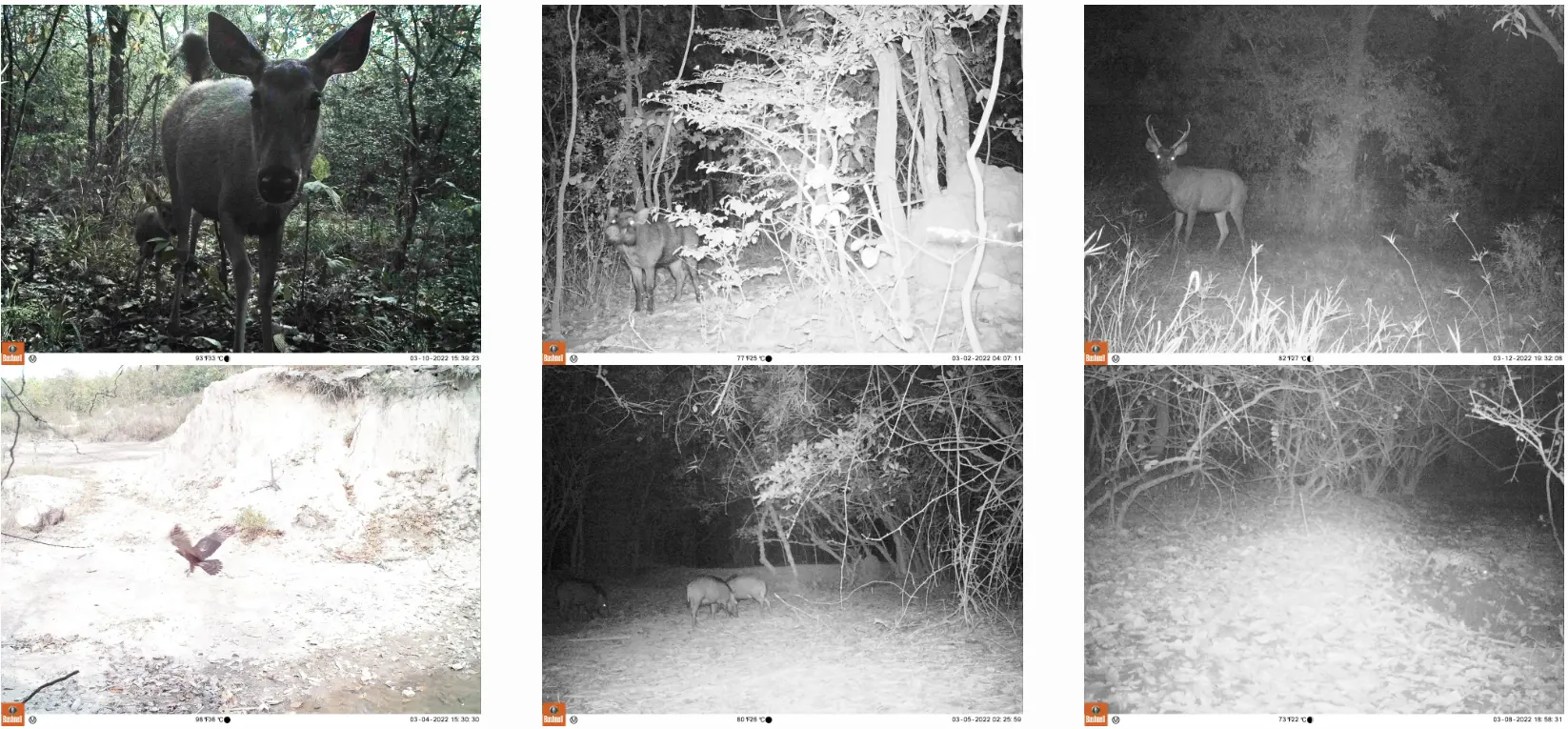
Marx said the organisation has released hundreds of animals, including several on the International Union for Conservation of Nature’s Red List of Threatened Species: the “vulnerable” sambar, binturong and fishing cat, as well as the “endangered” dhole and silvered langur and the “critically endangered” sunda pangolin.
“It is a nucleus for repopulating other areas,” Marx said of the forest. “We know this is such a valuable site for conservation of wildlife in Cambodia.”
Sot Phally, chief monk at Wat Tmor Antorng within Phnom Tamao Forest, said he is close with many of the animals. He takes nightly strolls through the forest, often encountering large deer and other species, and fills a container of rice for wild pigs that frequently visit the pagoda.
“I will be heartbroken if this forest was destroyed, because nature helps us in many ways,” Phally said. “If there is no forest, our human life has no meaning because there will be no water and animals.”
Phally was invited to a meeting in May by the Takeo Provincial Office to discuss a land exchange between the government and the pagoda. He said his mind hasn’t been made.
“For almost my whole life, I’ve always lived surrounded by the forest. I’ve enjoyed this life, I’ve never wanted to live in the city at all,” Phally said. “From my point of view, I would like to keep this forest and see it last forever and I want help and support from everyone.”
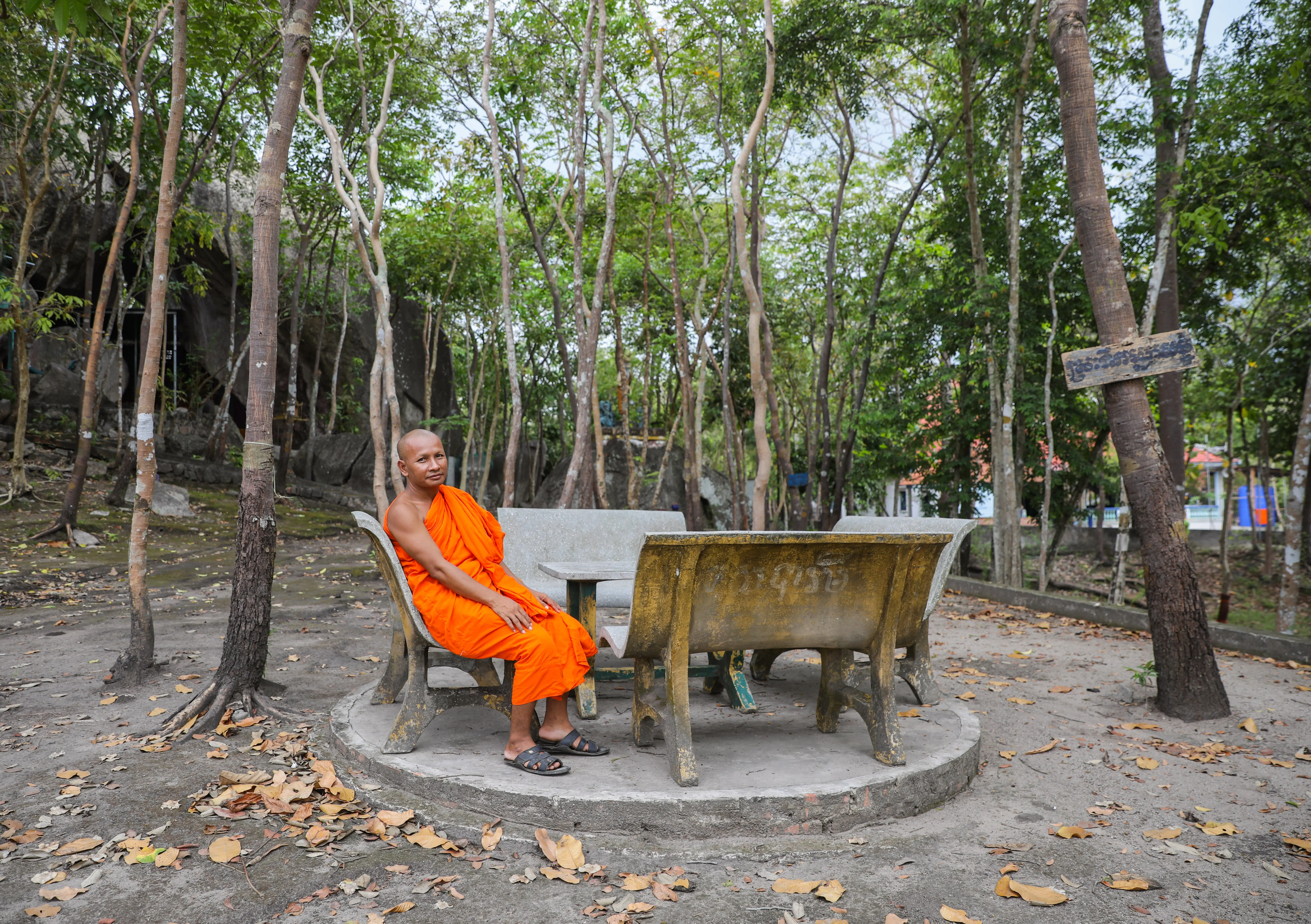
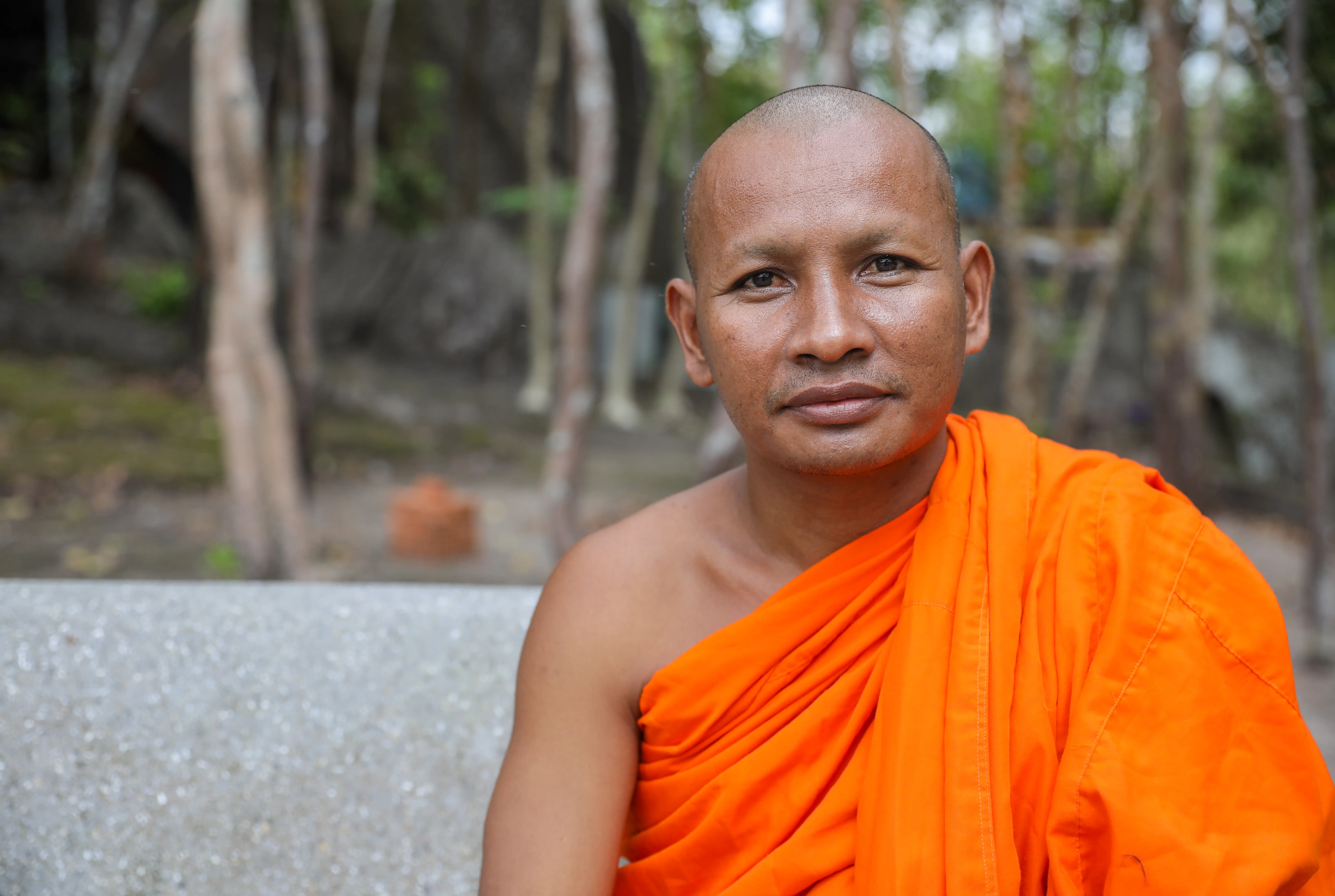
Neag No, who was born and raised in the same district as Phnom Tamao, said development would affect the entire community. As a farmer, No and his neighbours often pick leaves, bamboo and mushrooms around the edge of the forest. He fears construction could end that.
“I feel really regretful as a citizen,” No said. “I really hope the [authorities] will reconsider to find another place to develop because the benefit would not go to the citizens much.”
Conservation groups ponder next steps as developers and government officials decide the future of Phnom Tamao Forest, which is as clear and transparent as the official development plan and names of involved companies.
“This is so traumatic,” Marx said. “If the whole forest got destroyed and just more condominiums and high-rise buildings replaced this natural oasis, I can’t speak for Wildlife Alliance, but I’d have great conflict within myself about what my reaction would be.”
More than 20 years of working with wildlife in the Kingdom has taught Marx that the politics of conservation in Cambodia requires middle ground.
“With expanding human populations, sure there is going to be development, but that does not have to be at the total expense of nature,” Marx said. “I don’t think development necessarily means destruction of nature and natural resources.”
Additional reporting by Andrew Haffner, Nasa Dip, Chea Sameang and Veasna Thon.


